Abstract
According to data published by the United States National Center for Health Statistics, disability reported among the US population has increased substantially during the years 1966 to 1976. Among younger age groups, the increase in activity limitation involves visual and hearing impairments as well as asthma. In the middle age group (45-64), four causes increased in both sexes (diabetes, musculoskeletal disorders, hypertension, and diseases of the circulatory system other than hypertension and heart conditions); one cause affected men only (heart conditions) and one women only (malignant neoplasms). In the 65 and over age group, diabetes and circulatory diseases (excluding heart conditions and hypertension) increased significantly. Although the US population increased by 10 per cent, the number of persons permanently limited in their activities because of health conditions increased by 37 per cent with a much larger proportion of those disabled claiming to be unable to carry on their main activity. Changes in health survey procedures and changes in standards used by respondents to rate their health status are not believed to account for these findings. Factors which could have contributed to this trend include environmental deterioration and improved social benefits easing retirement and providing better access to the health care system. Planning agencies need to recognize the relationships of the health care system to disability as well as to mortality.
Full text
PDF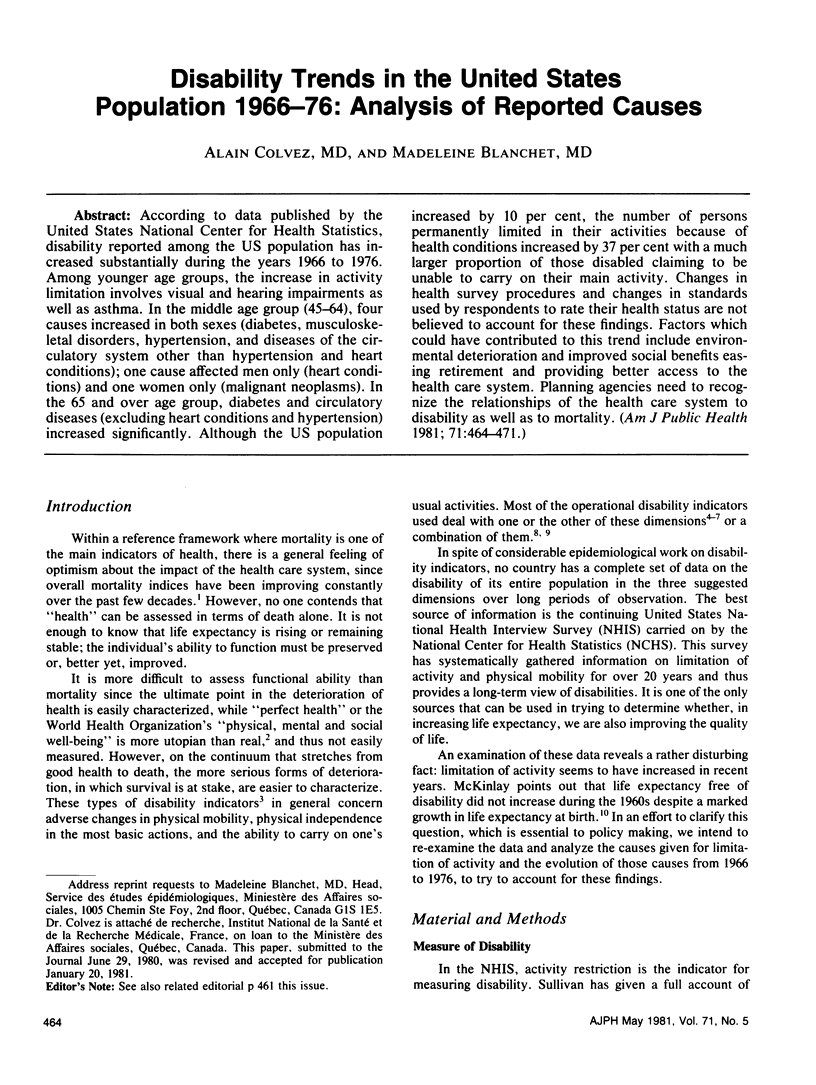
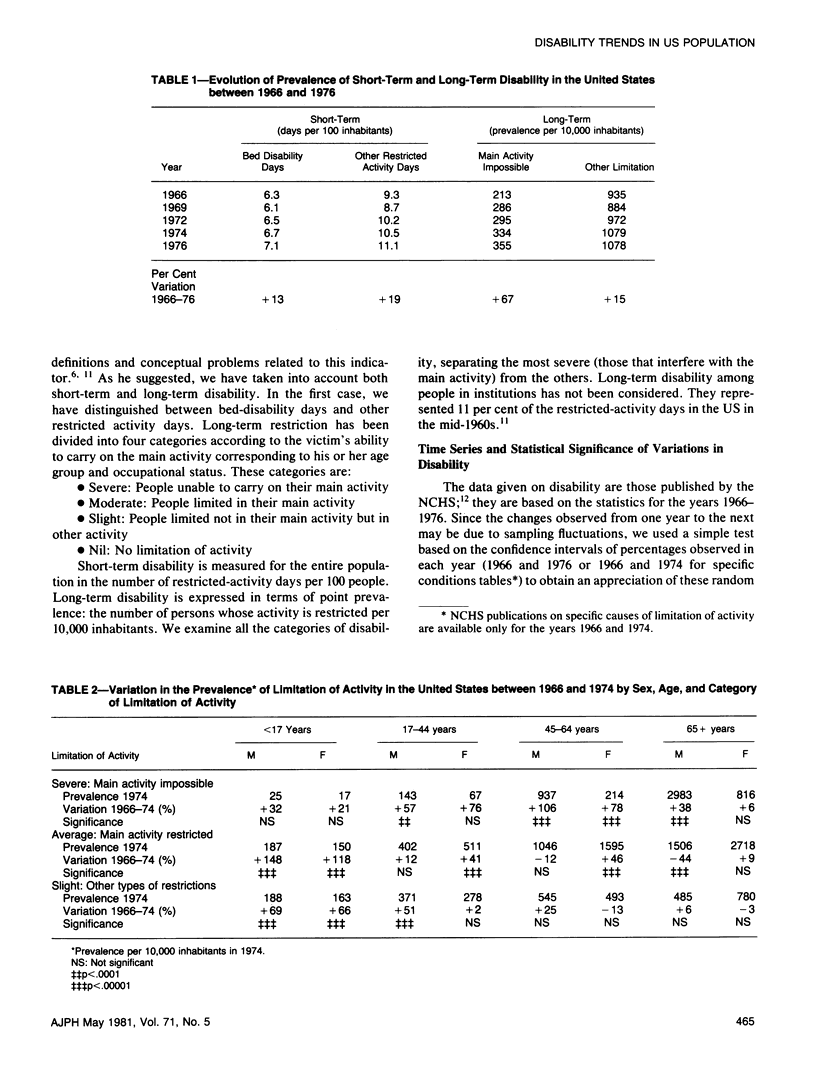
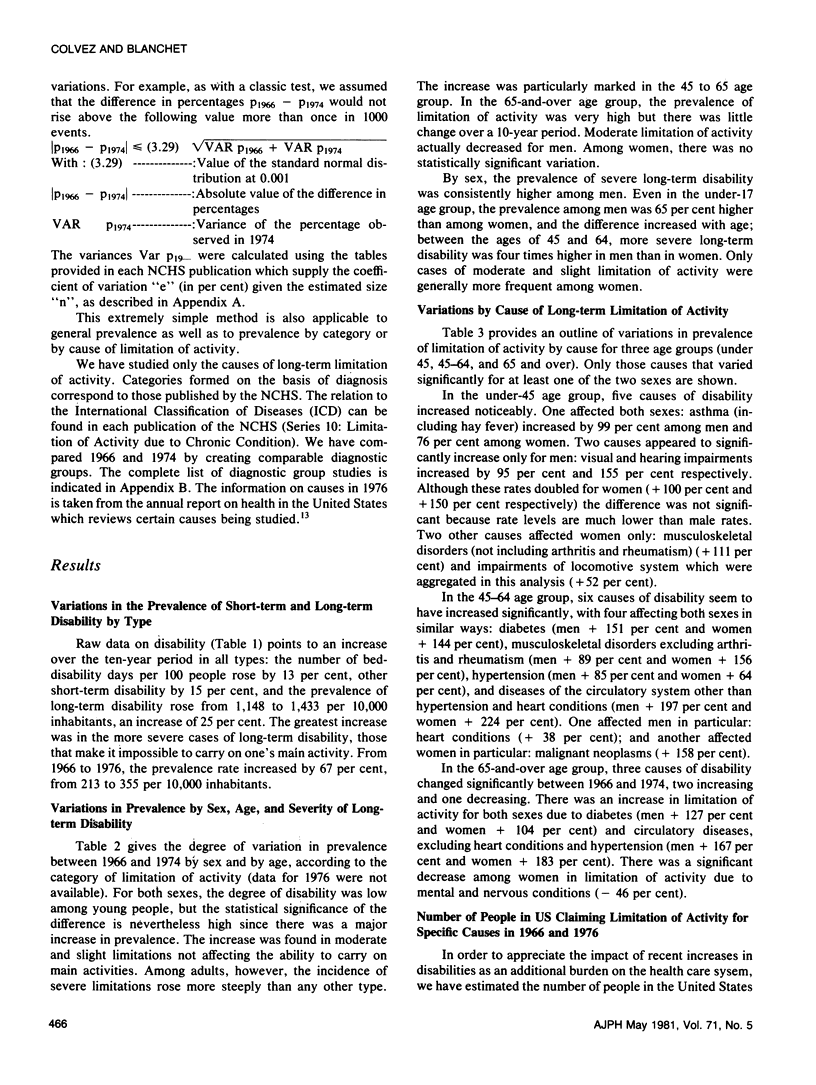
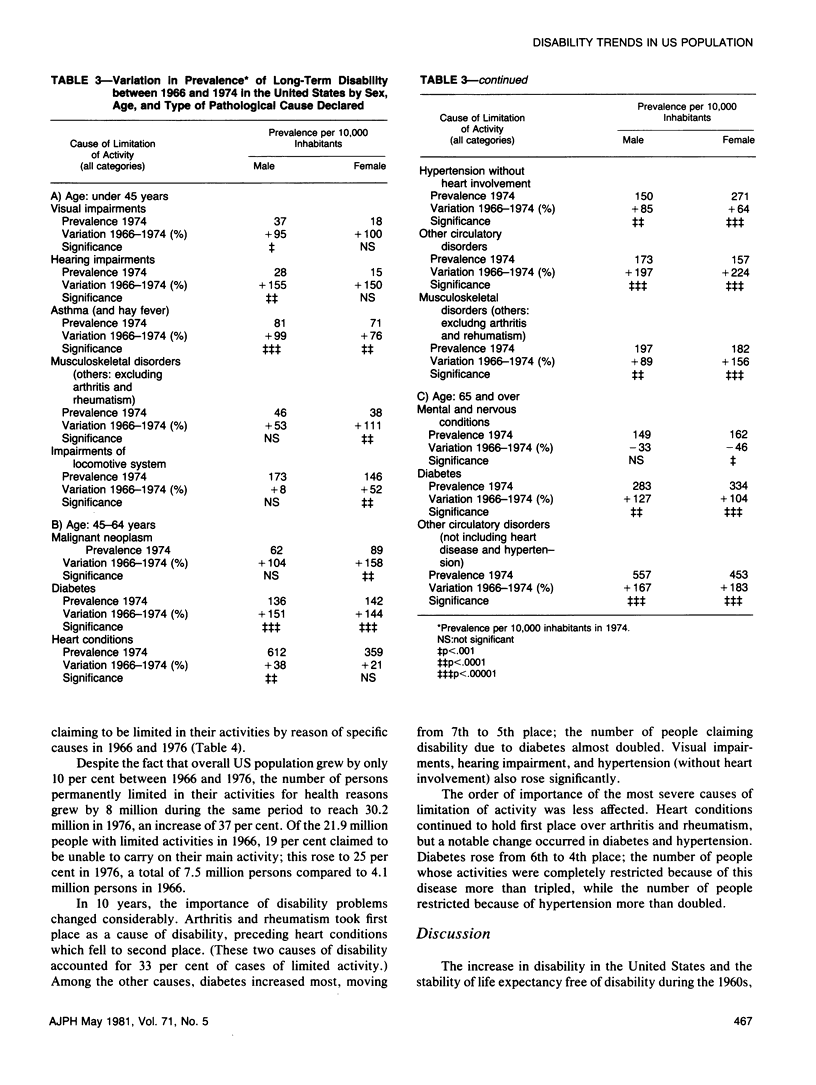
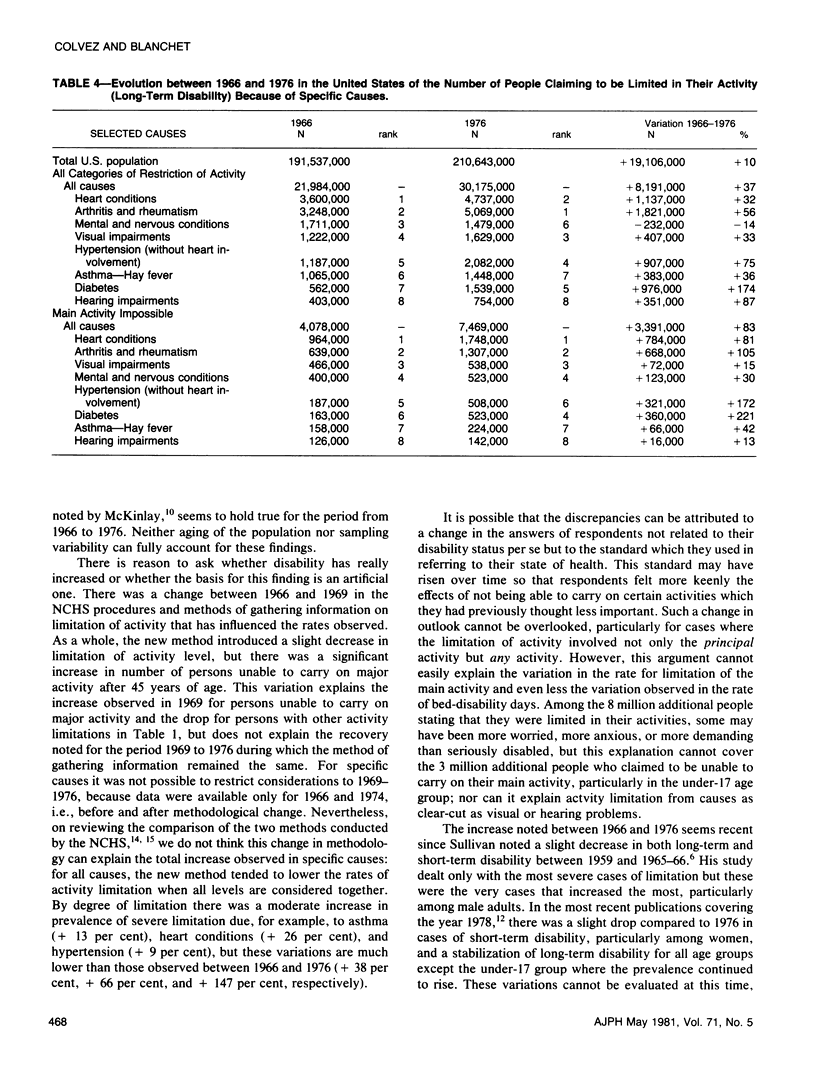
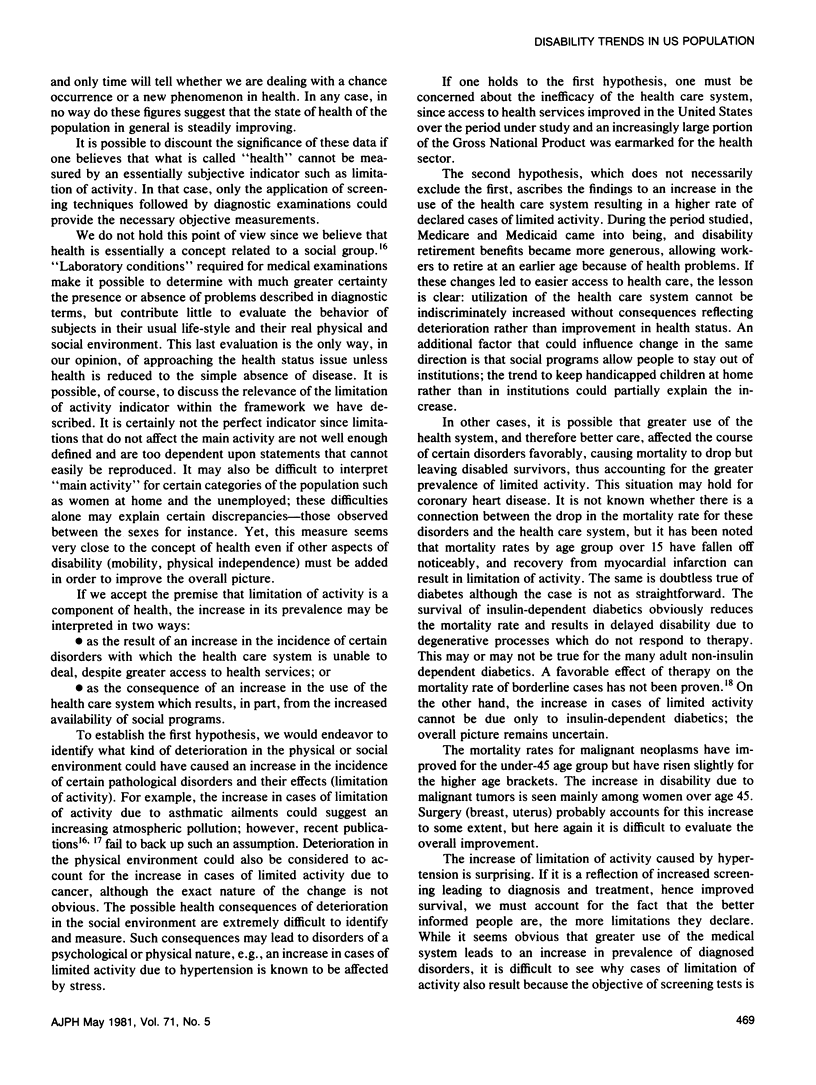
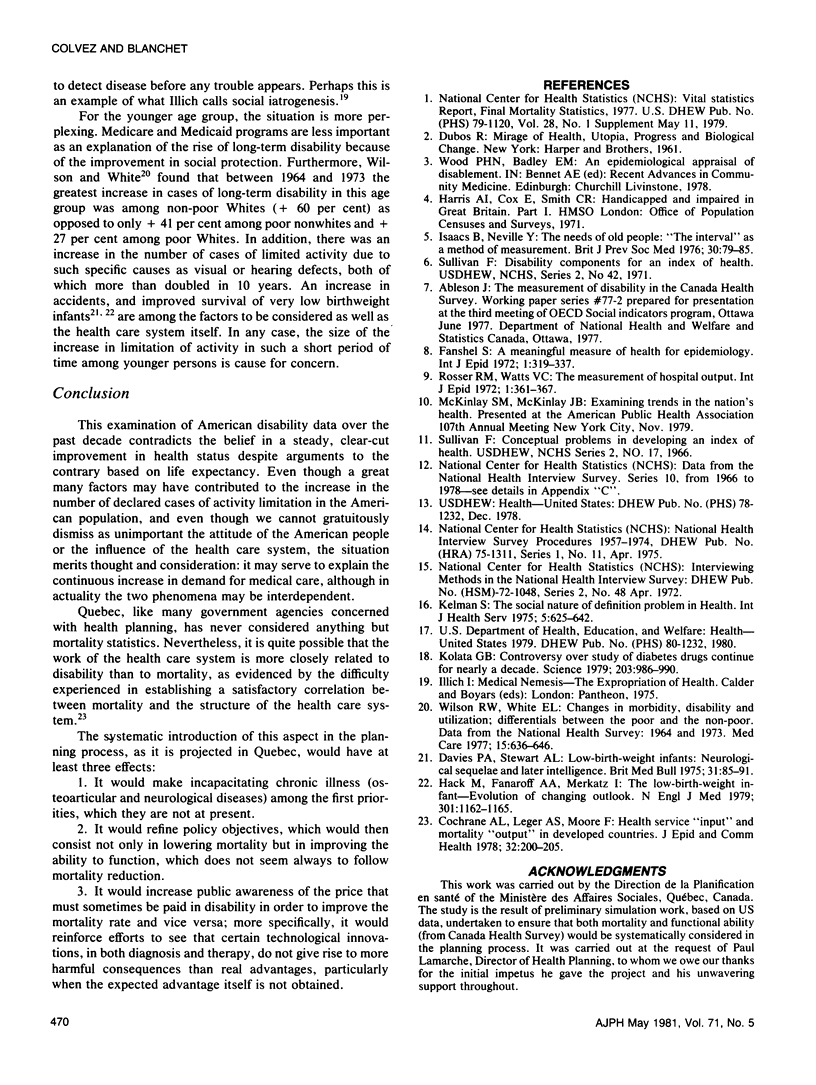

Selected References
These references are in PubMed. This may not be the complete list of references from this article.
- Cochrane A. L., St Leger A. S., Moore F. Health service 'input' and mortality 'output' in developed countries. J Epidemiol Community Health. 1978 Sep;32(3):200–205. doi: 10.1136/jech.32.3.200. [DOI] [PMC free article] [PubMed] [Google Scholar]
- Davies P. A., Stewart A. L. Low-birth-weight infants: neurological sequelae and later intelligence. Br Med Bull. 1975 Jan;31(1):85–91. doi: 10.1093/oxfordjournals.bmb.a071248. [DOI] [PubMed] [Google Scholar]
- Fanshel S. A meaningful measure of health for epidemiology. Int J Epidemiol. 1972 Winter;1(4):319–337. doi: 10.1093/ije/1.4.319. [DOI] [PubMed] [Google Scholar]
- Hack M., Fanaroff A. A., Merkatz I. R. Current concepts: the low-birth-weight infant--evolution of a changing outlook. N Engl J Med. 1979 Nov 22;301(21):1162–1165. doi: 10.1056/NEJM197911223012105. [DOI] [PubMed] [Google Scholar]
- Isaacs B., Neville Y. The needs of old people. The 'interval' as a method of measurement. Br J Prev Soc Med. 1976 Jun;30(2):79–85. doi: 10.1136/jech.30.2.79. [DOI] [PMC free article] [PubMed] [Google Scholar]
- Kelman S. The social nature of the definition problem in health. Int J Health Serv. 1975;5(4):625–642. doi: 10.2190/X5H6-TC5W-D36T-K7KY. [DOI] [PubMed] [Google Scholar]
- Kolata G. B. Controversy over study of diabetes drugs continues for nearly a decade. Science. 1979 Mar 9;203(4384):986–990. doi: 10.1126/science.370980. [DOI] [PubMed] [Google Scholar]
- Rosser R. M., Watts V. C. The measurement of hospital output. Int J Epidemiol. 1972 Winter;1(4):361–368. doi: 10.1093/ije/1.4.361. [DOI] [PubMed] [Google Scholar]
- Wilson R. W., White E. L. Changes in morbidity, disability, and utilization differentials between the poor and the nonpoor: data from the health interview survey: 1964 and 1973. Med Care. 1977 Aug;15(8):636–646. doi: 10.1097/00005650-197708000-00004. [DOI] [PubMed] [Google Scholar]


